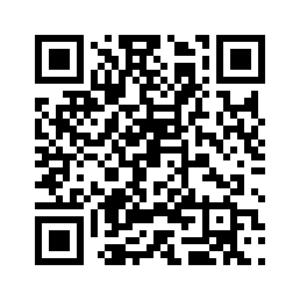Vestnik КRAUNC. Fiz.-Mat. Nauki. 2023. vol. 42. no. 1. P. 223-238. ISSN 2079-6641
INSTRUMENTS AND MEASUREMENT METHODS 
https://doi.org/10.26117/2079-6641-2023-42-1-223-238
Research Article
Full text in Russian
MSC 86-11
Experience in the Application of Non-Invasive Geophysical Methods in Solving Problems of Archeology
I. R. Yanbukhtin^*, A. Sh. Zakirov^*
Center for Advanced Technologies under the Ministry of Innovative Development of the Republic of Uzbekistan, Uzbekistan 100174, Tashkent, Talabalar Shaharchasi 3A.
Abstract. To date, in world practice, the use of non-invasive geophysical methods in solving archaeological problems is an integral part of the work at the initial stage of research. In the article the experience of using near-surface geophysics on different archaeological sites of Namangan, Djizak and Surkhandarya regions of the Republic of Uzbekistan is considered. The aim of the work was to study ancient burials of kurgan type, to identify cultural layer at the sites of ancient people standing and to study constructions and objects of vital activity of the Kushan period sites in the territory of Northern Bactria. Researches were carried out by the laboratory “Geophysics and nanomineralogy”of the Center of Advanced Technologies by a complex of geophysical methods including magnetic surveying, georadiolocation surveying and electrotomography (ET). The magnetic survey was carried out using Geometrics 856AX proton magnetometers (USA), with a distance of 50 cm between the sensors, so the step between the measurement points and the profiles was 50 cm. GPR measurements were carried out with a PulseEKKO PRO georadar of Sensors&Software company (Canada) using a grid profile system with a step between profiles of 1 m and an antenna with a central frequency of 100 MHz. During the electrical prospecting measurements by ET method a 72-electrode M.A.E. georesistivity meter was used. X-612EM (Italy) was used with different formations taking into account depth and size of the investigation object. Application of geophysical methods allows to determine different archaeological objects in accordance with the physical field under study, thereby the combination of methods makes it possible to obtain object-directed information, while not violating the integrity of the objects under study. As a result of processing and interpretation of field material were obtained maps, diagrams, sections and depth sections on geophysical data within the investigated sites with the allocation of anomalies that may be associated with archaeological objects. The results of the excavations, confirm the reliability of the research.
Key words: archeology, ground penetrating radar, electrical prospecting, magnetic prospecting.
Received: 20.02.2023; Revised: 26.03.2023; Accepted: 10.04.2023; First online: 17.04.2023
For citation. Yanbukhtin I. R., Zakirov A. Sh. Experience in the application of non-invasive geophysical methods in solving problems of archeology. Vestnik KRAUNC. Fiz.-mat. nauki. 2023, 42: 1, 223-238. EDN: GUDNJO. https://doi.org/10.26117/2079-6641-2023-42-1-223-238.
Funding. The article was made within the framework of the applied grant ALM-202109013 of the Ministry of Innovative Development of the Republic of Uzbekistan.
Competing interests. There are no conflicts of interest regarding authorship and publication.
Contribution and Responsibility. All authors contributed to this article. Authors are solely responsible for providing
the final version of the article in print. The final version of the manuscript was approved by all authors.
^*Correspondence: E-mail: ilyas_7@mail.ru
The content is published under the terms of the Creative Commons Attribution 4.0 International License
© Yanbukhtin I. R., Zakirov A. Sh., 2023
© Institute of Cosmophysical Research and Radio Wave Propagation, 2023 (original layout, design, compilation)
References
- Gorka T., Fassbinder J.W.E. Classification and Documentation of Kurgans by magnetometry, Proceedings of the Archaeological Prospection, Extended Abstracts, 9th International Conference on Archaeological Prospection, Izmir, Turkey, 19–24 September 2011, 183–186.
- Zakirov A. Sh., Yanbukhtin I. S., Mamarozikov T. U., J¨org Fassbinder V. E., Sergeev K. S., Sevostyanov M. V. Integration of magnetic exploration and electrical tomography in the study of barrow mounds on the territory of the Republic of Uzbekistan, Geofizika, 2022, 1, 72-76 (In Russian).
- Novikov V. V., Kainov S.Yu., Vlasov D. A., Sergeev K. S. , Gorin A. D. The results of electrical exploration and archaeological research of the Forest Kurgan group of the Gnezdovsky archaeological complex, Geofizika, 2018, 6, 82-90 (In Russian).
- Fassbinder J.W.E., Gorka T.H. Beneath the desert soil -archaeological prospecting with a ceasium magnetometer, in new technologies for archaeology, Multidisciplinary investigations in Palpa and Nasca, Peru, First, Natural Science in Archaeology, Springer, 49-69.
- Sverchkov L. M. Gornaya Ustrushana i nekotoryye voprosy o porazhenii geografii Sredney Azii, Rossiyskaya arkheologiya, 2013, 3, 80-91 (In Russian).
- Hegyi A., Diaconescu D., Urdea P., Sarris A., Pisz M., Onaca A. Using Geophysics to Characterize a Prehistoric Burial Mound in Romania, Remote Sens., 2021, 13, 842, https://doi.org/10.3390/rs13050842
- Pugachenkova G. A. O nedavnikh otkrytiyakh v Yuzhnom Uzbekistane (k probleme baktriyskoy gorodskoy kul’tury), Pamyatniki kul’tury: novyye otkrytiya, Moskva, 1975 (In Russian).
- Toshboyev F. E., Pardayev M. KH., Gritsina A. A. Izucheniye Gul’binskogo mogil’nika, Kul’tura nomadov Tsentral’noy Azii, 2008, 184-189 (In Russian).
- Chen R., Tian G., Zhao W., Wang Y., Yang Q. Electrical resistivity tomography with angular separation for characterization of burial mounds in southern China, Archaeometry, 2018, 60, 1122–1134.
- Tsourlos P., Papadopoulos N., Yi M.-J., Kim J.-H., Tsokas G. Comparison of measuring strategies for the 3-D electrical resistivity imaging of tumuli, J. Appl. Geophys., 2014, 101, 77–85.
Information about authors

Yanbukhtin Ilyas Rustamovich – PhD (Gelog. & Min.), Senior Researcher at the Laboratory of Geophysics and Nanomineralogy of the Center for Advanced Technologies under the Ministry of Innovative Development of the Republic of Uzbekistan, Tashkent, Uzbekistan, https://orcid.org/0000-0003-0019-9702

Zakirov Azamat Shukhratovich – PhD (Tech.), Senior Researcher at the Laboratory of Geophysics and Nanomineralogy of the Center for Advanced Technologies under the Ministry of Innovative Development of the Republic of Uzbekistan, Tashkent, Uzbekistan, https://orcid.org/0000-0002-9245-6747.

